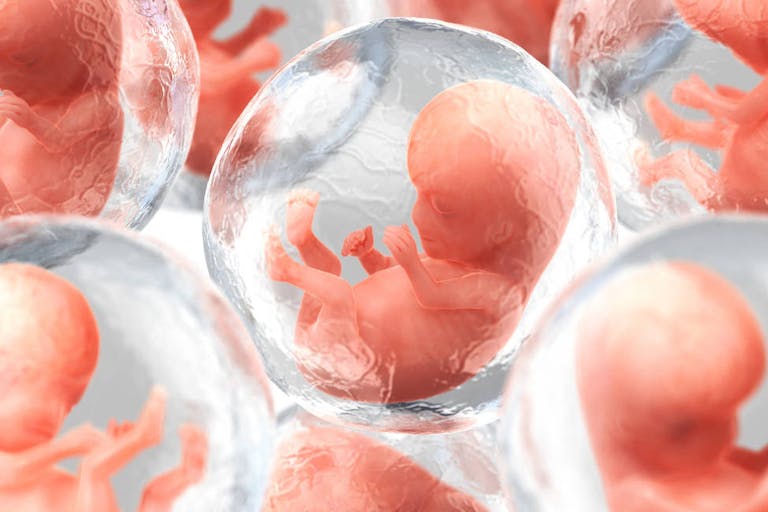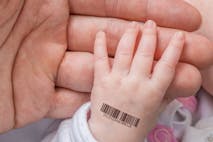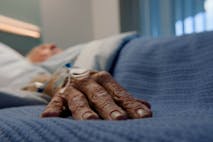
Vietnamese Catholics widen support for pregnant mothers
Angeline Tan
·
Researchers experimented on 1,000 embryos leftover from IVF
Scientists used nearly 1,000 human embryos donated to research following a separate IVF study in order to experiment on them in the hope of improving the success rate of in vitro fertilization (IVF).
During the study, it was learned that half of the embryos — about 500 — stopped developing due to genetic issues in early development. Study author Rajiv McCoy, an assistant professor of biology at Johns Hopkins University, believes that this is the same rate at which embryos stop developing in natural conception as well. Researchers think that this knowledge could allow more embryos to be successfully created during the practice of IVF — which could mean more embryos left perpetually frozen along with the estimated one million who are currently frozen. Research has shown that IVF destroys human embryos at a higher rate than abortion does.
McCoy explained, “It is very surprising that most of these embryo arrests are coming not from errors in egg formation, but from errors happening in cell divisions after fertilization. The fact that these errors don’t come from the egg suggests that maybe they could be mitigated by changing the way IVF is done.”
Johns Hopkins, along with London Women’s Clinic researchers in the UK, compared the embryos that stopped developing within a few days of fertilization with those that continued to develop. They found that some embryos begin to develop properly with the maternal genetic material before ceasing to develop once the embryo’s genes take over. The embryos who did not survive began with the typical 46 chromosomes like those who did survive but then passed down incorrect numbers of chromosomes as the cells continued to divide.
READ: Alabama Supreme Court to decide case involving ‘wrongful death’ of human embryos
“It doesn’t really matter if you have extra missing chromosomes in the very beginning because the maternal machinery is controlling things,” McCoy said. “When the embryo’s genome turns on, that’s when things go wrong.”
Article continues below
Dear Reader,
In 2026, Live Action is heading straight where the battle is fiercest: college campuses.
We have a bold initiative to establish 100 Live Action campus chapters within the next year, and your partnership will make it a success!
Your support today will help train and equip young leaders, bring Live Action’s educational content into academic environments, host on-campus events and debates, and empower students to challenge the pro-abortion status quo with truth and compassion.
Invest in pro-life grassroots outreach and cultural formation with your DOUBLED year-end gift!
According to Medical Xpress, human embryos can experience high rates of chromosome gain and loss, referred to as aneuploidy, early on in development. Aneuploidy is understood to be a contributor to early miscarriage, and fertility clinics will often refuse to implant them. However, it has recently been discovered that such embryos can actually self-correct and continue to develop in the womb.
The researchers want to run further testing on specific cells from the embryos who stopped developing in order to trace the chromosomes’ origins to either maternal or paternal genetics. They also want to learn if the chemical composition of the dish in which the human embryos are kept could be harming or killing the embryos.
“The problem could be that the chemical composition of the culture medium that are commonly used will not allow all embryos to grow, that the abnormal cell divisions are due to stresses on the egg and early embryo that causes the abnormal divisions associated with chromosome abnormalities,” said study co-author Michael Summers, a Senior Consultant at London Women’s Clinic.
IVF is carried out 2.5 million times a year around the world, but each year only 500,000 babies are actually born from the IVF procedure, according to research published in Reproductive Biomedicine Online. That means that each year, if just one embryo is created during each IVF cycle (the average is seven), at least 80% — at least two million — of the human beings created through IVF either die during the process, are frozen indefinitely, or are destroyed.
Correction, 10/17/23: This article was updated to reflect that the embryos were donated to researchers following a separate IVF study.

Live Action News is pro-life news and commentary from a pro-life perspective.
Contact editor@liveaction.org for questions, corrections, or if you are seeking permission to reprint any Live Action News content.
Guest Articles: To submit a guest article to Live Action News, email editor@liveaction.org with an attached Word document of 800-1000 words. Please also attach any photos relevant to your submission if applicable. If your submission is accepted for publication, you will be notified within three weeks. Guest articles are not compensated (see our Open License Agreement). Thank you for your interest in Live Action News!

Angeline Tan
·
Politics
Cassy Cooke
·
Guest Column
Right to Life UK
·
Issues
Angeline Tan
·
Issues
Bridget Sielicki
·
Issues
Nancy Flanders
·
Human Interest
Nancy Flanders
·
Politics
Nancy Flanders
·
Human Interest
Nancy Flanders
·
Politics
Nancy Flanders
·
Human Interest
Nancy Flanders
·